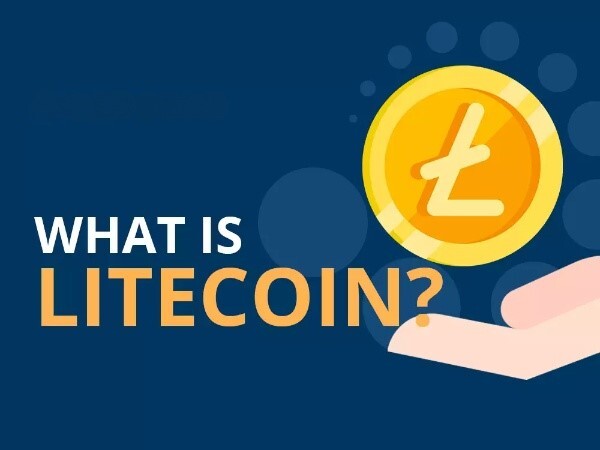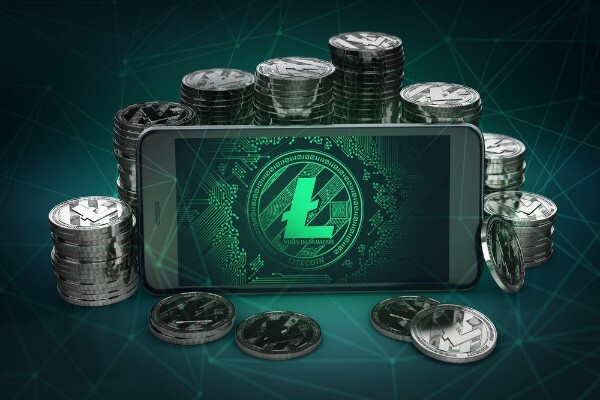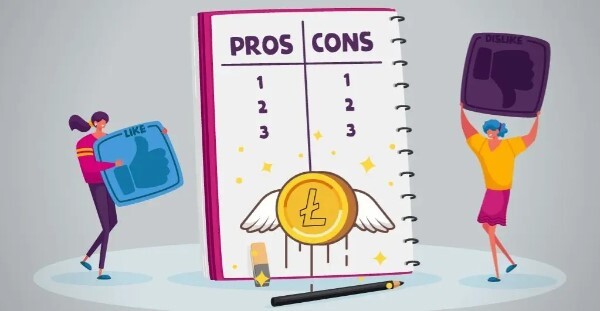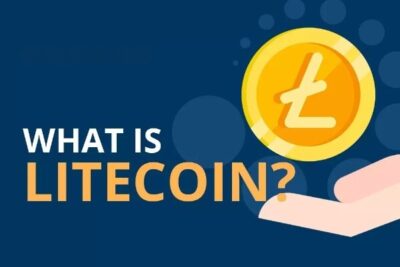

Cryptocurrency Explained: What Is Litecoin In Comparison With Bitcoin?
30 May 2022
What is Litecoin? Is the hot topics that have been recently researched on the internet. You are the newbies and be in a maze with tons of information out there when finding out What is Litecoin Exactly? Litecoin is frequently described to be the digital silver to Bitcoin’s digital gold. It was built in 2011 by Charlie Lee, a then Google employee. The idea behind Litecoin was to build a newer version of Bitcoin that would be quicker and cheaper to use.
You have shown a desire to learn more about Litecoin. Having said that, you are aware of the most useful resources that can be used to learn more about it. At bePAY, everything that you want is tailored according to your needs. What is Litecoin? How does the Litecoin protocol function? Is Litecoin more advantageous than other types of cryptocurrency? As well Is Litecoin A Good Investment? In this essay, bePAY will explain everything in detail for you. Let’s get started.
What Is Litecoin?
What is Litecoin? Litecoin is a decentralized, peer-to-peer network cryptocurrency; it was derived from a split in the bitcoin blockchain, the transparent, digital public record utilized by the vast majority of cryptocurrencies. Litecoin is one of the first “altcoin” alternative coins to Bitcoin. Litecoin was meant to facilitate near-instantaneous, near-zero-cost global payments between individuals and organizations.
Litecoin, like Bitcoin, employs a proof-of-work (PoW) technique to validate transactions on the blockchain; but, due to specific alterations, it is seen as a “lighter” and speedier alternative to Bitcoin. The primary distinction between Litecoin and Bitcoin is that Litecoin employs the SCRYPT mining method to provide speedier transaction speeds.
Litecoin creates a new block to be mined almost four times quicker than Bitcoin, every 2.5 minutes. Additionally, the Litecoin supply is four times larger. Litecoin has a limit of 84 million coins, compared to 21 million for Bitcoin.
Unlike typical fiat currencies such as the dollar or euro, the supply of Litecoin is limited to 84 million. By the end of October 2021, around 67 million Litecoins had been mined.

What is Litecoin?
>> More info about what are altcoins
How Does Litecoin Work?
The Litecoin system operates using open-source software. It is distributed under the MIT/X11 licence.
However, what does this licence entail? It gives free access to enhanced system capability to all system users. Therefore, each user has the ability to modify the code, produce copies for distribution, and make modifications to the software copies.
Because the development and delivery of new software versions are publicly accessible, the source code and binary modules may be analyzed.
System blocks inside a software arise far more often than, say, Bitcoin. Consequently, it is feasible to execute a much greater number of monetary operations throughout time intervals. In this instance, it is unnecessary to confirm user transactions. Most significantly, this program works flawlessly. It does not need modification or adjustment.
Almost all bitcoin transactions are conducted using a Litecoin wallet that was previously generated. This is a unique location, also known as temporary bitcoin storage, where users may monitor all ongoing or completed transactions, as well as the account balance, at any moment.
However, a user is required to input a password while login into a bitcoin wallet. The same password is required for all cryptocurrency transactions.
Thus, all of your money is safe and secure against unauthorized third-party involvement during trade transactions and from harmful applications aimed to steal coins.

How does Litecoin work?
What Makes Litecoin Different?
The first efforts of the cryptocurrency have been supported by the deployment of a number of features that were originally suggested and eventually implemented on the Bitcoin network. Frequently, these enhancements aim to guarantee that the network can grow to accept more transactions per second without losing decentralization or transactional privacy.
Segregated Witness (Segwit)
Bitcoin and Litecoin are close enough that they may both get the same updates. Litecoin often adopts them early, since a significant mistake on its network would result in less harm than on the Bitcoin network. Historically, Litecoin’s market capitalization has eclipsed Bitcoin’s.
Segregated Witness was one of the first features deployed on the Litecoin blockchain before it was extended to Bitcoin (SegWit). While SegWit was first suggested for Bitcoin in 2015, Litecoin was the first to embrace the technology. After there were no big issues with LTC, the technology was incorporated into Bitcoin.
SegWit helps a cryptocurrency grow by “segregating” the digital signature data on each transaction (the witness) outside of it, so making more efficient use of the limited space available. It was created to solve Bitcoin’s scalability problems.
Early in 2017, Litecoin introduced SegWit, and due to the success of the functionality on its blockchain, Bitcoin won approval for its deployment. Initially, SegWit was embraced considerably more swiftly on the Litecoin network than on the Bitcoin blockchain. Its use has steadily increased on both networks.
Lightning Network
The Lightning Network is a scaling solution that establishes an additional layer on top of a cryptocurrency’s blockchain, in which transactions are fast and transaction fees are minimal. This additional layer comprises payment channels created by users. It was initially intended for implementation on the Bitcoin network.
Similar to SegWit, the network was first deployed on Litecoin, which was utilized by many to test Lightning Network in a real-world economic setting. The scaling solution for layer two is contentious. According to detractors, it drives users to non-custodial wallets, where they would be required to operate their own node.

New features of Litecoin
Usage of Litecoin’s Lightning Network has been rather gradual, while Bitcoin’s Lightning Network adoption has increased tremendously in its first few months. The existing low transaction costs of the base layer may account for the slowness of LTC.
In 2017, the first off-chain atomic exchange between the Bitcoin and Litecoin Lightning Networks was done successfully. When the Bitcoin network is clogged and costs are high, Charlie Lee proposed that Litecoin may onboard users into the Lightning Network.
>> Read more about the mission of the Lightning network to bring Bitcoin to everyone
MimbleWimble
MimbleWimble is a modified version of the proof-of-work (PoW) method that underpins the blockchain of a cryptocurrency. It prevents the identification of individual inputs and outputs associated with transactions, hence boosting privacy and obscuring traceability.
In October 2020, Litecoin created a MimbleWimble testnet, and its primary developer has been working to make it simpler for “non-technical Litecoin users” to begin testing it. Notably, there is no agreement on the optimal approach to implementing the MimbleWimble protocol on Litecoin or Bitcoin.
Some developers fear that combining MimbleWimble with the Bitcoin protocol might result in unfavorable effects and is too challenging. Consequently, it has been proposed that it might be deployed as a sidechain to Litecoin or Bitcoin.
Litecoin In Comparison With Bitcoin
The primary distinction between Litecoin Vs Bitcoin is their respective maximum supply caps. Bitcoin’s supply is limited to 21 million, whereas Litecoin’s is limited to 84 million.
The mining protocols of Litecoin and Bitcoin differ from those of Bitcoin. As previously stated, Bitcoin employs SHA-256 while Litecoin utilizes a modified version of Scrypt to produce coins. The difference in protocols affects the transaction processing timeframes of both cryptocurrencies. Bitcoin transactions are processed and confirmed four times faster than Litecoin transactions.
Because there are fewer rounds of transaction verification, transaction processing speed may come at the price of the security. Litecoin’s confirmation time of 2.5 minutes (compared to Bitcoin’s confirmation time of around 10 minutes) is beneficial for small businesses that do not want or need transactions to be very secure.

Litecoin vs Bitcoin
Litecoin Vs Bitcoin Quick Compared
| Compared Traits | Litecoin | Bitcoin |
| Released date | 2011 | 2009 |
| Maximum supply | 84 million | 21 million |
| TPS | 2.5 minutes | 10 minutes |
| Mining algorithm | Scrypt | SHA-256 |
Litecoin Pros And Cons
Below are the benefits of Litecoin:
Pros
- The processing of transactions occurs more quickly and with no delays
- Transactions with lower costs
- Additional security measures to combat malware such as viruses and trojan horses
- Over the years, Litecoin has shown remarkable relative stability.
- The coins are reasonably priced, although substantially more expensive than the majority of their competitors.
- Despite the fact that all cryptocurrency investments are speculative, Litecoin is less risky than many younger currencies.
Potential Risks Associated with Investing in Litecoin Investments always include risk. Here are some reasons why investing in Litecoin may be risky:
Cons
- Not nearly as much growth as the other companies in the industry
- Investor fears regarding future possibilities
- A decreasing proportion of the market
- It is consistent, but its growth is not enough to wow investors.
- Litecoin has lost market share and has a smaller market capitalization than other cryptocurrencies.
- This might impede Litecoin’s growth.

Litecoin pros and cons
FAQs About Litecoin
Is Litecoin A Good Investment?
If investors accept the premise that cryptocurrencies represent the future of money, then Litecoin’s philosophy and structure would be a perfect match. It is particularly designed for fast and economical online transactions, and as a consequence, it might become one of the most widely used cryptocurrencies in the world.
What Is Litecoin Price And How To Buy Litecoin?
The Litecoin price can be seen on CoinMarketCap and other websites. As with many of the most popular cryptocurrencies, Litecoin’s brief existence has been marked by tremendous volatility.
How to buy Litecoin:
LTC is accessible on the majority of crypto exchanges (e.g., Binance, Coinbase, Gemini, FTX) against both other cryptocurrencies (e.g., BTC & ETH) and fiat currencies (e.g., USD & EUR). Additionally, you may purchase LTC using Robinhood and PayPal.

How to buy Litecoin and check Litecoin prices?
What Is Litecoin Used For?
Litecoin may be used as a P2P payment mechanism to pay anybody in the world without the need for an intermediary to complete the transaction. It is also a store of value and a component of a diversified cryptocurrency portfolio.
In Comparison Litecoin Vs Ethereum Which One Is Better?
When comparing Litecoin vs Ethereum. Litecoin is a cryptocurrency developed for peer-to-peer transactions. Ethereum is an ecosystem that operates on a global virtual computer that powers several distinct cryptography-based technologies.
Ethereum features a currency, ether (ETH), used to enable transactions inside the Ethereum network. In terms of value, ETH typically ranks in the top five and has a larger trading volume. Which is preferable depending on your interests, ambitions, and planned purposes.
Wrapping Up
Due to its long track record and show its capacity to withstand times of severe volatility, Litecoin may be a wise choice for long-term investors. If you like taking chances, your investment may be profitable in the future. However, the Litecoin network has experienced less innovation than rival blockchains, which might leave it in the dust over time.

What Is Bitcoin Cash In Comparison With Bitcoin?
10 June 2022










